Lives rendered in the faint grey of feather-light pencil strokes. Street furniture bent out of shape. Frank testimonials from people half-broken, grasping for a lifeline. The HVAC system of one gallery (in Belgium) disassembled and reconfigured, uselessly, in another gallery (in Eastbourne), its metal tubes capped off, leading nowhere. If there is one thing that links the work of the four artists competing for this year’s Turner Prize, it is a certain sense of transitoriness, of fragility and futility.
All of these works deal with time in some way: time remembered and time lost, time for work and time off, the dead weight of sedimented time and its all too sudden fleetingness. If the Turner Prize in 2021 was all about collectives, comprising a mix of community groups and artistic partnerships from London, Belfast, Hastings, Cardiff and the Isle of Skye; and 2022 was an activists’ Prize, in which works spoke directly to the climate crisis, trans rights and the then-recent Black Lives Matter protests; then this year’s Turner is an insurgents’ prize, a vagabond prize. Between them, these four artists show us the intransigency of institutions – and how they might be changed.
To enter Jesse Darling’s room at the Towner Gallery is to be steered in a particular way. The doorway is flanked by steel pedestrian barriers that seem to be coming alive, their legs grotesquely extended and twisted like so many drunken dancers at a wedding. A ladder, crooked and skewed, bursts through a hole ripped out of the plaster walls. Red and white strips of incident tape pool in a crumpled heap on the floor. A scrappy Union flag is roughly stitched together out of torn fragments of old, used tea towels: a pathetic kind of empire built on a mound of busted ring binders stuffed with concrete instead of paper. It’s a wonderfully chaotic installation, full of life and energy and myriad expressive details – even the fire exit has been adorned with a vintage floral porcelain doorknob. Everywhere you look, emblems of control are bastardised and made pathetic, rendered more fragile, more fungible.

Installation view of Ghislaine Leung’s presentation at the Turner Prize 2023, Towner Eastbourne. Photo: Angus Mill
Ghislaine Leung doesn’t ‘make’ things so much as write ‘scores’, like a composer. In her hands, the gallery’s handlers and assistants become orchestral players, wielding ventilation ducts and Wendy houses instead of violins. On one wall, Malevich’s black square becomes the middle part of a seven by 24 oblong grid, here representing not so much the cosmic void but a particular block of time: those few hours in a week that the artist has free for her studio practice after work and domestic duties. Far from an abstract entity, then, it becomes a very concrete demonstration of the precariousness of a creative life. Echoes of the domestic sphere loom large throughout Leung’s work, from the LeapFrog video baby monitor on one wall that makes a live show of the Towner’s first floor storage rooms, to the curious conga line of children’s toys arranged along the floor. Sourced from a local library, this assortment of miniature houses, Henry Hoovers and washing machines paints a strange portrait of infantile play, one that very closely resembles domestic labour. Collectively, the works here offer a peek at the structures usually masked behind an artist’s practice.
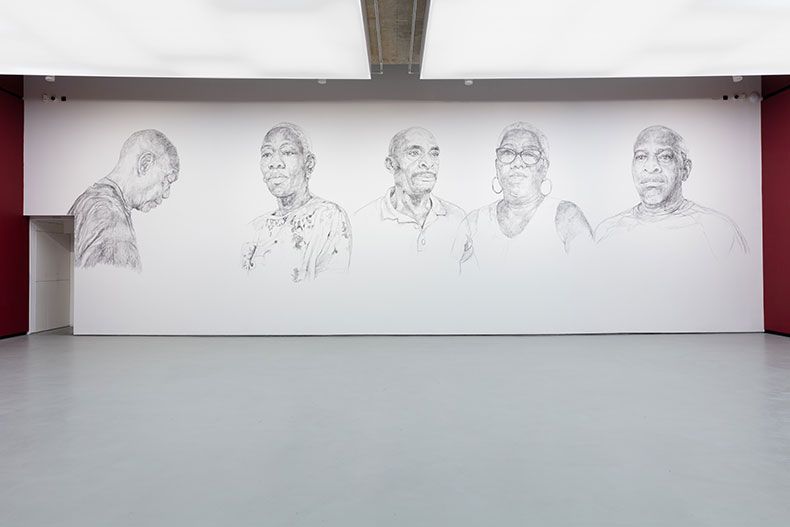
Installation view of Barbara Walker’s presentation at the Turner Prize 2023, Towner Eastbourne. Photo: Angus Mill
Barbara Walker has filled one whole wall of her gallery with pencil portraits of five members of the Windrush Generation so cruelly let down by the British state in recent years. It’s an image that’s full of simmering dignity and another of this year’s direct interventions into the infrastructure of the gallery itself. But as a drawing, it points towards the possibility of its own erasure. That vulnerable temporality infects everything in the room. On the other walls we get to know these people through the documents once called on to prove their identities: army discharge forms, official letters, invoices and so forth. These, too, are pencil reproductions, with further portraits of their bearers superimposed like a watermark. In these likenesses, we get a glimpse of what the Home Office officials who processed these documents didn’t see: their humanity.
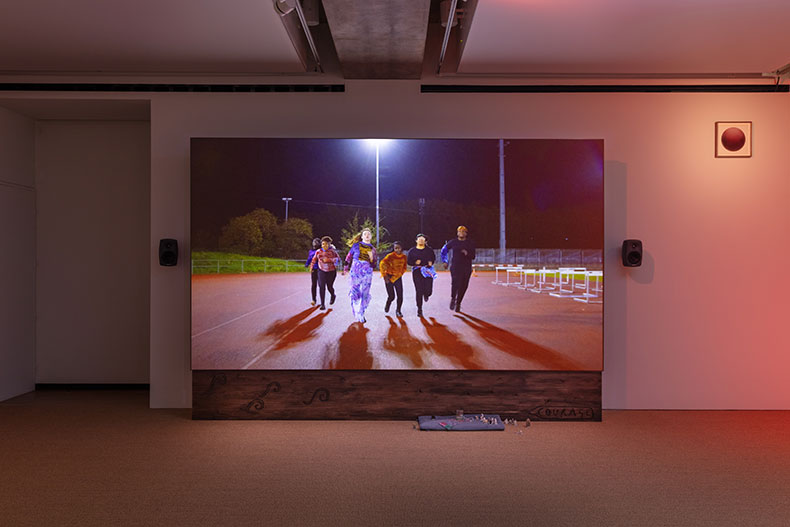
Installation view of Rory Pilgrim’s presentation at the Turner Prize 2023, Towner Eastbourne. Photo: Angus Mill
Rory Pilgrim’s hour-long film Rafts introduces us to a succession of luckless individuals, who speak in turn about the things that kept them going during difficult times: a tree, a garden, a picture of a train, etc. Interspersed between footage of a small chamber ensemble (including Pilgrim himself on the harp and piano) performing a suite of rather schmaltzy pop ballads (picture something like James Blunt covering Andrew Lloyd Webber), the protagonists of the work recite doggerel and moon about in city parks in a way that feels trite and over-rehearsed. This is an undoubtedly sincere and well-meaning work that’s not without a certain craft, but it’s riddled with clichés and a nauseating sentimentality. Thankfully, this dreadful muddle was more than compensated by the bravura of feverish imagination on display in Jesse Darling’s gallery.
The 2023 Turner Prize is at Towner Eastbourne until 14 April 2024.
Unlimited access from just $16 every 3 months
Subscribe to get unlimited and exclusive access to the top art stories, interviews and exhibition reviews.

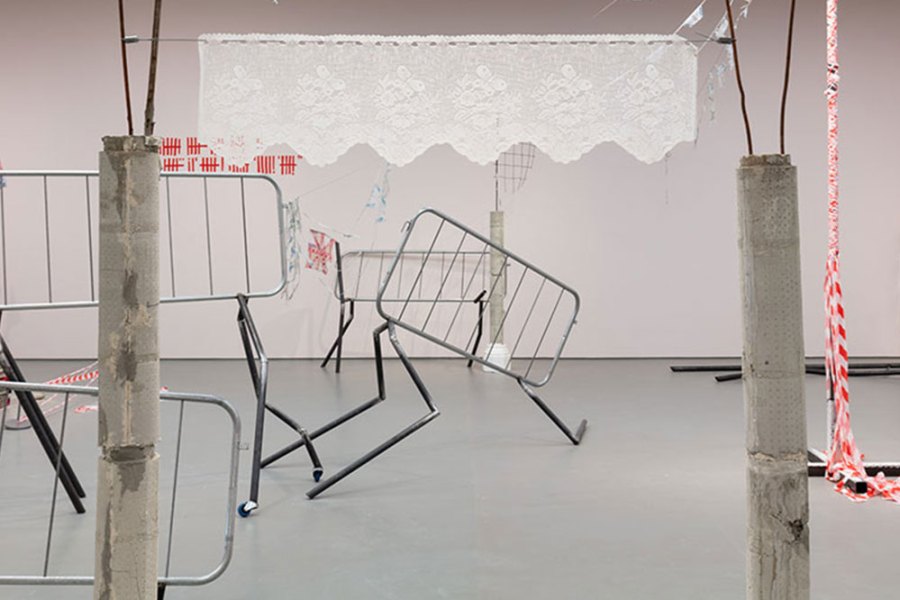

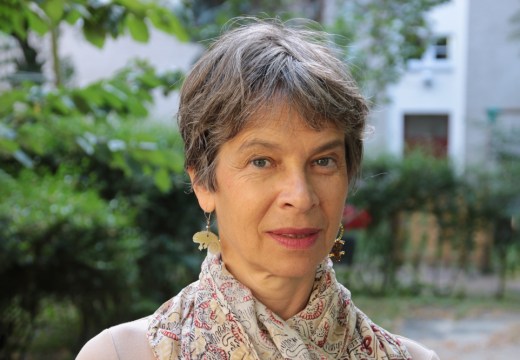
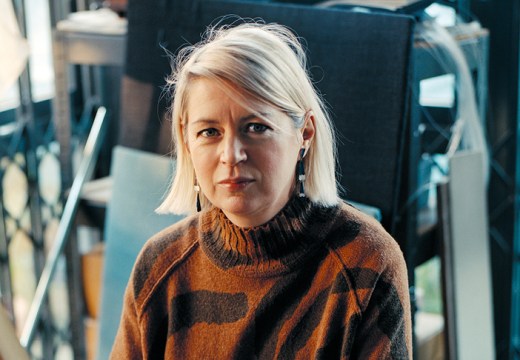









![Masterpiece [Re]discovery 2022. Photo: Ben Fisher Photography, courtesy of Masterpiece London](http://www.apollo-magazine.com/wp-content/uploads/2022/07/MPL2022_4263.jpg)
Has arts punditry become a perk for politicos?